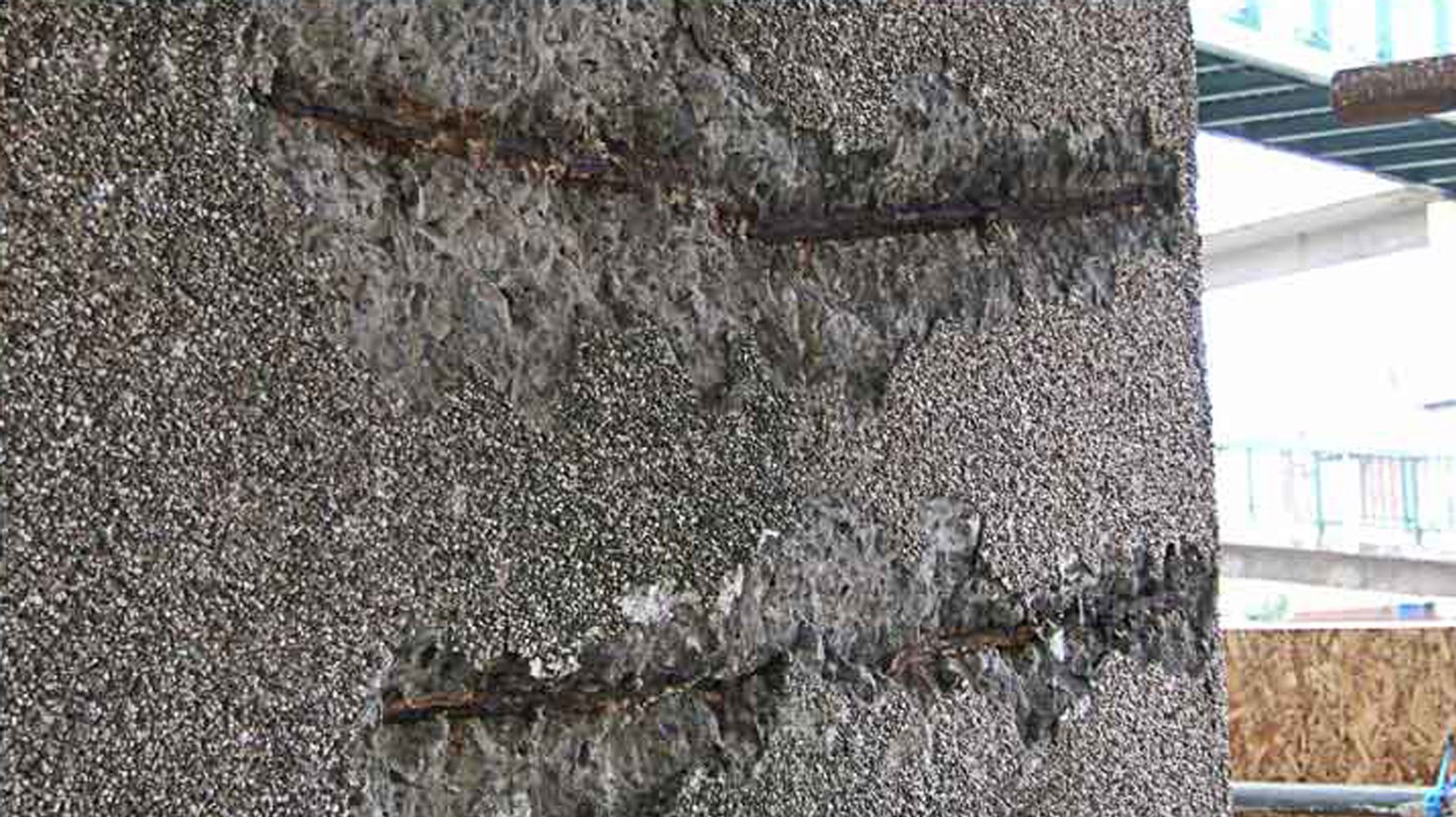Outside of direct mechanical damage or fire, the corrosion of steel reinforcement remains at the heart of most cases of concrete failure. The process of structural failure via concrete carbonation relies upon the presence of moisture and the action of environmental forces, most notably in this case carbon dioxide. To understand the mode of failure it is necessary to first have a basic appreciation of the nature of reinforced concrete.
Reinforced concrete
The introduction of reinforced concrete in the 19th century transformed what was possible with concrete construction – its strength, low cost and versatility has enabled the creation of all manner of structures which were otherwise impossible or impractical.
The two components of reinforced concrete are well suited: steel being strong in compression and resistive to tensile forces, and concrete having a high compressive strength. The presence of calcium hydroxide in concrete creates an alkaline environment with a pH of 12 to 13 and the placement of rebar inside of this naturally alkaline state serves to protect reinforcement from corrosion, creating a thin film around the steel reinforcement – known as the ‘passivating layer’.
Concrete carbonation is a natural process
The process of carbonation is almost impossible to avoid in untreated concrete that is exposed to the elements. As soon as the concrete is exposed to the air, the process of carbonation can begin: carbon dioxide slowly penetrates the surface of the concrete where it reacts with moisture in the pores and calcium hydroxide (which is one of the compounds in concrete) to form calcium carbonate. As carbon dioxide meets the pore water, a dilute carbolic acid is created which acts to reduces the concrete’s natural alkalinity.
Depending upon the concrete’s porosity and permeability, concrete carbonation may advance at a rate of 1mm to 5mm per year. The initial effect is a hardening of the concrete and a corresponding increase in its compressive strength. However the process of carbonation also serves to reduce the natural alkalinity of the concrete from around pH13 to pH8. It is this change in the chemical characteristics of the reinforced concrete which poses a profound threat to its structural integrity: as carbon dioxide travels deeper into the concrete and approaches the depth of embedded steel, the passivating layer around the reinforcement is broken down by the process of carbonation, exposing the steel to the corrosive effects of air and water. As the steel reinforcement rusts and expands in volume it places force on the concrete which cracks and spalls, causing the rate of failure in the surrounding area to increase exponentially.
Factors affecting the rate of Concrete Carbonation
The extent to which reinforced concrete can resist the deleterious effects of carbonation depends upon its physical characteristics including its design, production and on-site preparation/protection, as well as external factors such as its location and exposure to environmental forces or contaminants.
Physical Characteristics
The grade of concrete, its permeability and depth of cover (the distance from the external face of the concrete to the steel reinforcement) will influence the time to potential failure. However, it must be noted that high strength concrete is not necessarily more durable.
Of further concern is the mixing, compaction and curing regime – good site practice is essential to maximise concrete density whilst avoiding plastic shrinkage and surface cracking, the latter often as a result of the mix being too wet.
Location and Environment
The physical location of the reinforced concrete is a significant factor in determining the likelihood of failure. Indeed, concrete elements that are situated indoors and in relatively low humidity conditions may not fail despite widespread carbonation. It is external water penetration that is usually required for structural concrete failure to ensue.
Structures that are exposed to aggressive weather conditions are especially vulnerable, particularly where continuous cycles of wetting and drying as well as the effects of freeze/thaw action are likely to occur. When these conditions exist and environmental contaminants such as salts are also present, the rate of failure is accelerated further still by chloride attack.
If you believe you have a concrete carbonation problem, we can offer a range of concrete repair and protection services based on thorough survey diagnosis to confirm the mechanism of failure.

